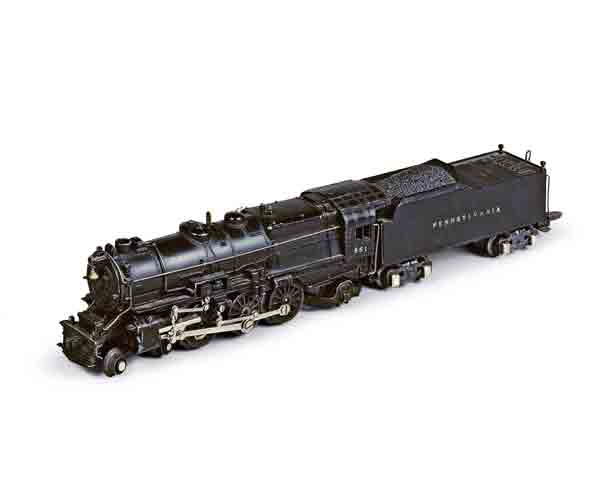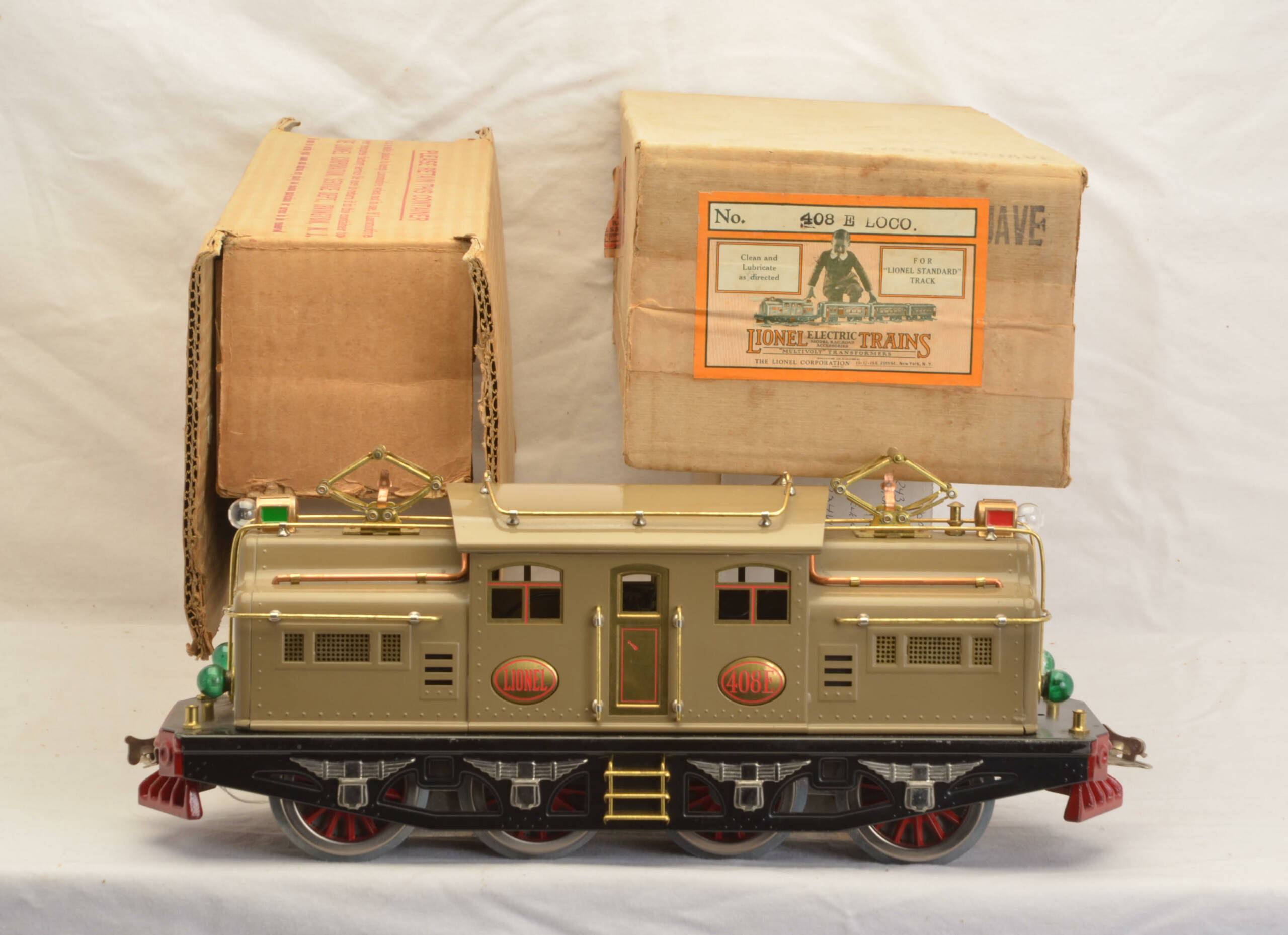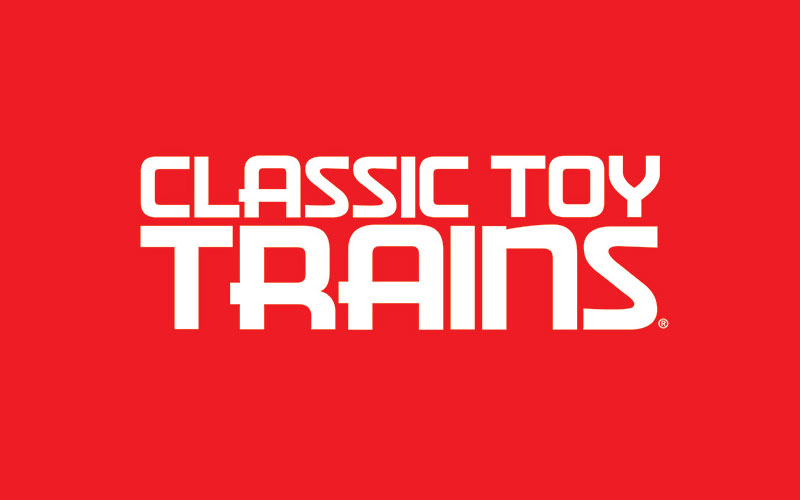These pre-World War II American Flyer locomotives operated on three-rail O gauge track, but were built to a scale of 3/16 inch to a foot. That’s S scale. Only after the war did American Flyer introduce two-rail S gauge track. With that the company retooled its 3/16 line of locomotives and rolling stock to operate on the new track size.
But back to the Pennsylvania Flyer. Among Gilbert’s eight 3/16 scale O gauge locomotives was a model of the Pennsylvania Railroad K5-class 4-6-2 locomotive. Gilbert likely gambled that the K5 would be the most popular Pacific-type locomotive to model. Only in hindsight does the K4 seem a more logical choice.

The Flyer K5 was cataloged in 1940 and ’41 in three numbers – 559, 560, and 561 – with a sometimes confusing mix of features. All have worm-gear drive and feature a no. 558 die-cast metal tender. Some tenders contained a “choo-choo sound” mechanism.
According to Greenberg’s Guide to American Flyer Prewar O Gauge, [out of print] the 559 came with Remote Directional Control (the 560 and 561 didn’t). This feature replaced a conventional reverse unit with one operated by a pulse of DC power laid over on the AC track power. It’s the same electrical concept Lionel used to trigger its onboard whistles.
On American Flyer locomotives, DC directional control allows operators to skip the forward-neutral-reverse-neutral cycle of a typical reverse unit. Instead, one press of a button is forward, another press is reverse. That’s it.
Reflecting a decade of economic depression, the 559 also came in a less-expensive kit form with decals for the cab and tender. Pre-assembled models were lettered and numbered with rubber stamps.
Today, 3/16″ scale locomotives aren’t as common as their S gauge siblings from the postwar era. However, they do show up at train meets and auctions and on dealer lists and websites.
The years haven’t been kind to early Flyer die-cast metal trains. Impurities in the zinc alloy used to make these locomotives are to blame for many cracked, broken, or warped metal pieces. Wheels and other small parts suffering from this problem, which is called “zinc pest,” can disintegrate into a pile of metal crumbs despite modern efforts to preserve the metal. Obviously, prices for these locomotives are directly related to the condition of the metal. [See a photo of what zinc pest can do to a locomotive wheel in this article.]














Has anyone seen a K5 with the number 560 stamped on it?
Thanks Neil for the research and great information on prewar A.C. Gilbert tinplate O gauge! Having rolling stock but no engine in this category, the K5 looks like a great pairing.